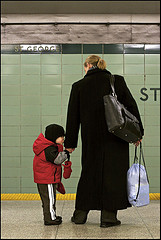Inside Higher Ed reports on a recent publication from the American Sociological Association about the job market for new Ph.D.s.
“New Ph.D.’s in sociology appear to have a healthy job market in which to land positions, based purely on the numbers. But an analysis released by the American Sociological Association also points to a potential mismatch in specialties, as hiring committees appear to be much more enamored of criminology than are sociology graduate students.”
The up-side…
“The overall picture is quite positive. The association had listings in 2006 for 1,086 unique positions, 610 of them for assistant professors. During that same year, 562 Ph.D.’s were awarded in sociology. The report notes that not all of the posted positions in any year are filled by new Ph.D.’s or at all, but given that there are also postdoctoral positions, positions for which no rank is specified, and positions not included in the ASA job listings, the outlook is encouraging for new Ph.D. recipients.”
The down-side…
“Where things are slightly less certain is in the area of specialties. More than one third of the assistant professor positions did not specify a subfield. But the top subfield specified (nearly three times more than the runner up) was criminology/delinquency, and the sixth most popular subfield was a related one, law and society. The concern of those who prepared the report is that evidence suggests grad students are focused elsewhere.”


 A
A  The latest report from the
The latest report from the 